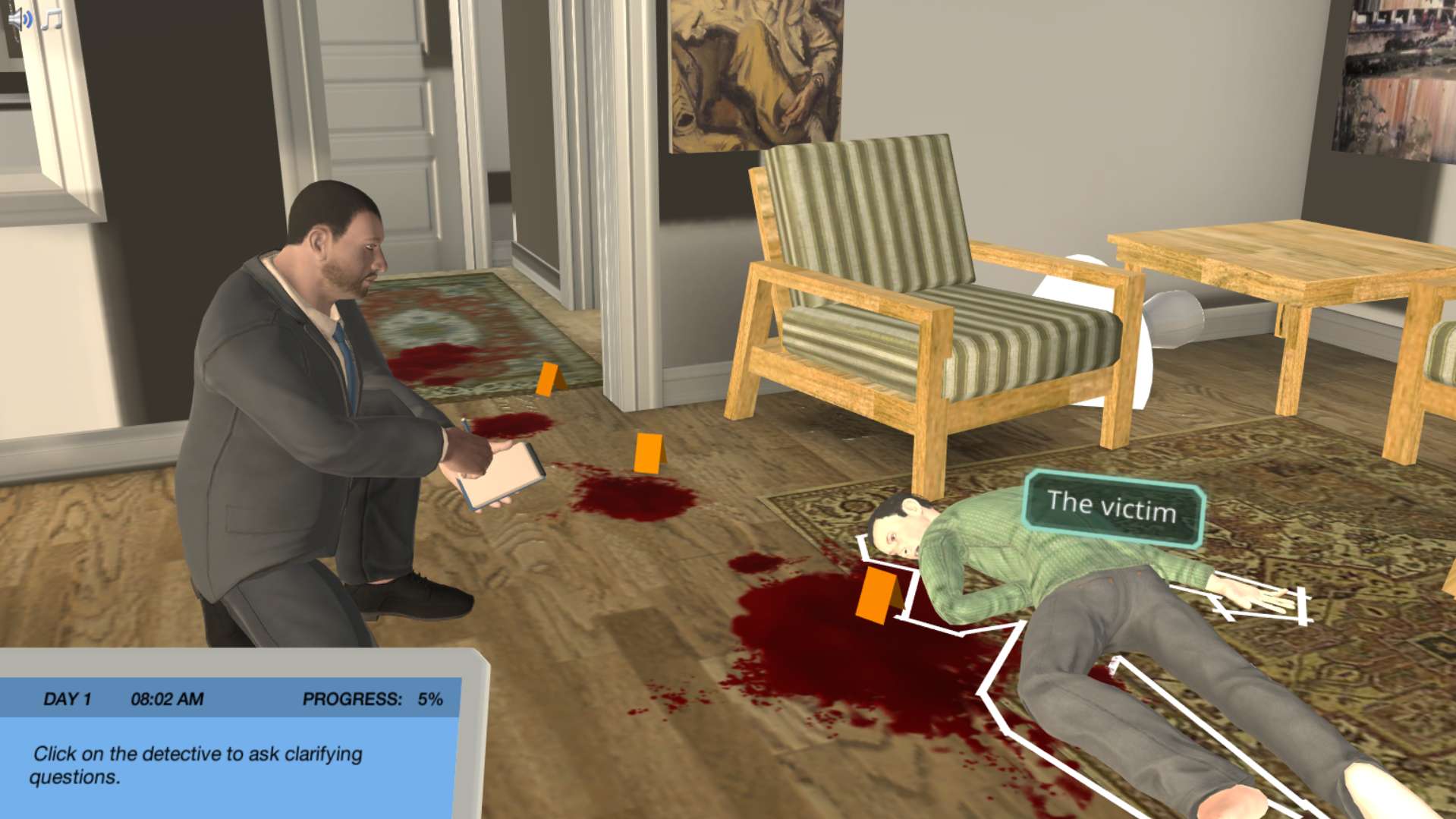Heading 1
Heading 2
Heading 3
Heading 4
Heading 5
Heading 6
Lorem ipsum dolor sit amet, consectetur adipiscing elit, sed do eiusmod tempor incididunt ut labore et dolore magna aliqua. Ut enim ad minim veniam, quis nostrud exercitation ullamco laboris nisi ut aliquip ex ea commodo consequat. Duis aute irure dolor in reprehenderit in voluptate velit esse cillum dolore eu fugiat nulla pariatur.
Block quote
Ordered list
- Item 1
- Item 2
- Item 3
Unordered list
- Item A
- Item B
- Item C
Bold text
Emphasis
Superscript
Subscript
About This Simulation
Learn the techniques and application of Polymerase Chain Reaction and Gel Electrophoresis. Explore a real-world application, such as analyzing unique genetic fingerprints to solve a murder case.
Learning Objectives
- Explain the function of DNA polymerase in DNA replication and synthesis
- Perform a PCR experiment using DNA from a blood sample as the template
- Carry out a gel electrophoresis that separates DNA according to its size
- Interpret the unique signature of the human genome and the use of tandem repeated regions (TRR) in DNA profiling
About This Simulation
Lab Techniques
- Gel electrophoresis
- DNA profiling
- Polymerase Chain Reaction (PCR)
Related Standards
- HS-LS1-1, HS-LS3-1
- No direct alignment
- B.4 Medicine
- Biology 3.5 Genetic modification and biotechnology
- 2.7 DNA replication, transcription and translation
Learn More About This Simulation
In the Polymerase Chain Reaction (PCR) simulation, you will be thrown right into a crime scene where a murder has taken place. After investigating the crime scene, your first task is to collect blood samples in the hope that the murderer has left traces of their DNA.
Analyze DNA
After sampling, you will go to the lab to isolate and analyze the sample of DNA you collected. By using a PCR kit, a thermocycler, and the purified DNA from the crime scene, it is up to you to mix the correct reagents and perform the PCR experiment.
See the structure of DNA and its replication up close
A 3D animation will show the PCR experiment at the molecular level, illustrating the structure of DNA and its replication. Quiz questions will be asked throughout the experimental process, as well as at specific steps of the PCR itself.
Identify the murderer
In the PCR simulation, you will look at collected and other prepared samples from the suspects on a gel and then compare the patterns that emerge.
Will you be able to identify the murderer?
For Science Programs Providing a Learning Advantage
Boost STEM Pass Rates
Boost Learning with Fun
75% of students show high engagement and improved grades with Labster
Discover Simulations That Match Your Syllabus
Easily bolster your learning objectives with relevant, interactive content
Place Students in the Shoes of Real Scientists
Practice a lab procedure or visualize theory through narrative-driven scenarios


FAQs
Find answers to frequently asked questions.
Heading 1
Heading 2
Heading 3
Heading 4
Heading 5
Heading 6
Lorem ipsum dolor sit amet, consectetur adipiscing elit, sed do eiusmod tempor incididunt ut labore et dolore magna aliqua. Ut enim ad minim veniam, quis nostrud exercitation ullamco laboris nisi ut aliquip ex ea commodo consequat. Duis aute irure dolor in reprehenderit in voluptate velit esse cillum dolore eu fugiat nulla pariatur.
Block quote
Ordered list
- Item 1
- Item 2
- Item 3
Unordered list
- Item A
- Item B
- Item C
Bold text
Emphasis
Superscript
Subscript
A Labster virtual lab is an interactive, multimedia assignment that students access right from their computers. Many Labster virtual labs prepare students for success in college by introducing foundational knowledge using multimedia visualizations that make it easier to understand complex concepts. Other Labster virtual labs prepare learners for careers in STEM labs by giving them realistic practice on lab techniques and procedures.
Labster’s virtual lab simulations are created by scientists and designed to maximize engagement and interactivity. Unlike watching a video or reading a textbook, Labster virtual labs are interactive. To make progress, students must think critically and solve a real-world problem. We believe that learning by doing makes STEM stick.
Yes, Labster is compatible with all major LMS (Learning Management Systems) including Blackboard, Canvas, D2L, Moodle, and many others. Students can access Labster like any other assignment. If your institution does not choose an LMS integration, students will log into Labster’s Course Manager once they have an account created. Your institution will decide which is the best access method.
Labster is available for purchase by instructors, faculty, and administrators at education institutions. Purchasing our starter package, Labster Explorer, can be done using a credit card if you are located in the USA, Canada, or Mexico. If you are outside of North America or are choosing a higher plan, please speak with a Labster sales representative. Compare plans.
Labster supports a wide range of STEM courses at the high school, college, and university level across fields in biology, chemistry, physics, and health sciences. You can identify topics for your courses by searching our Content Catalog.















